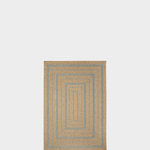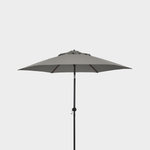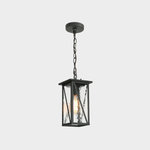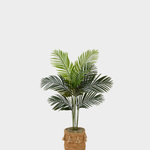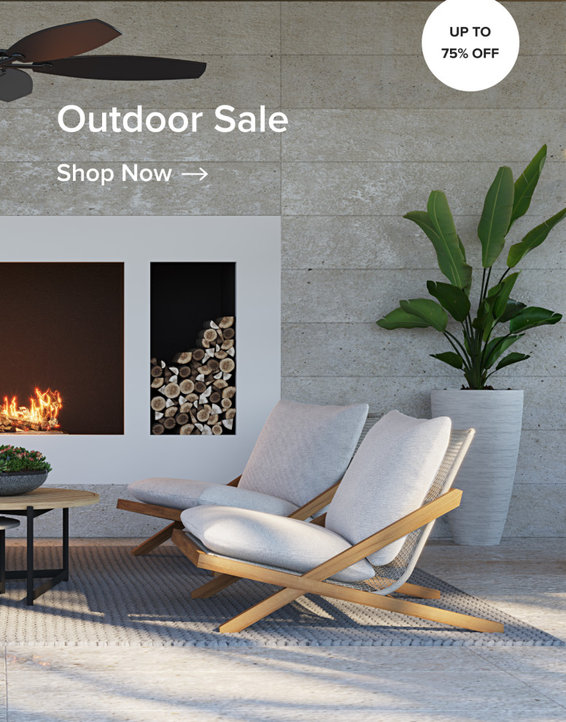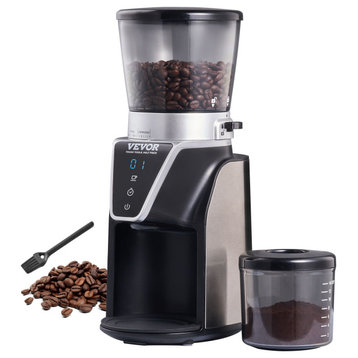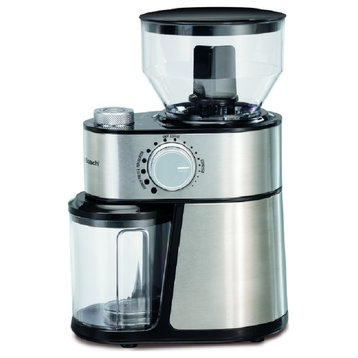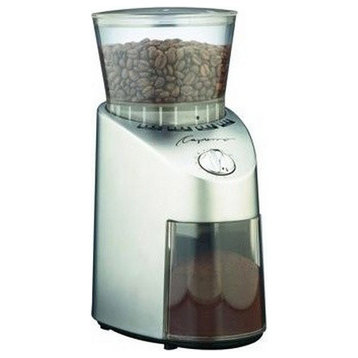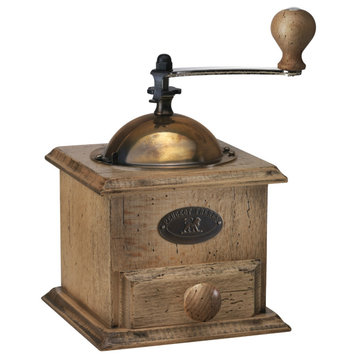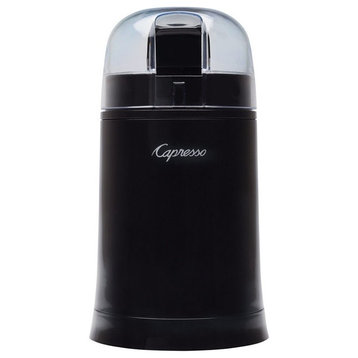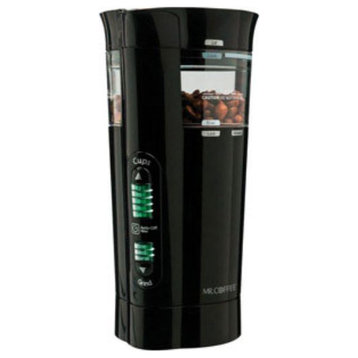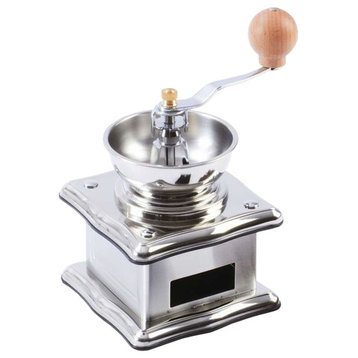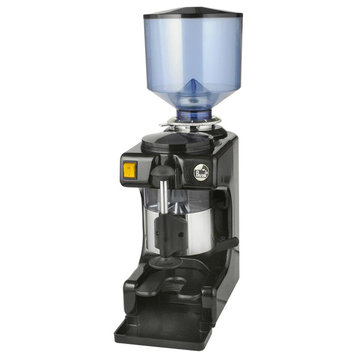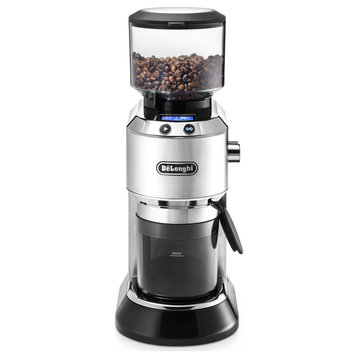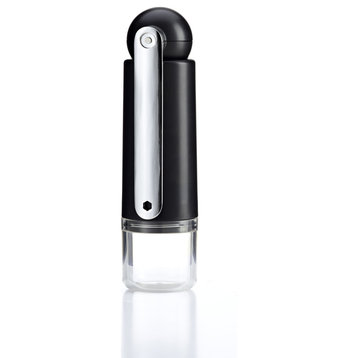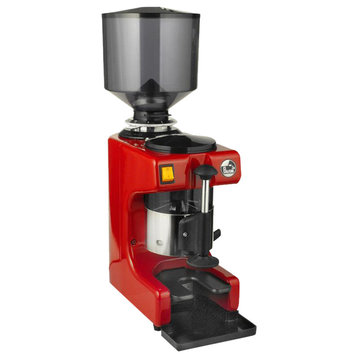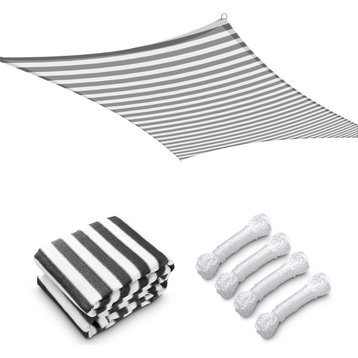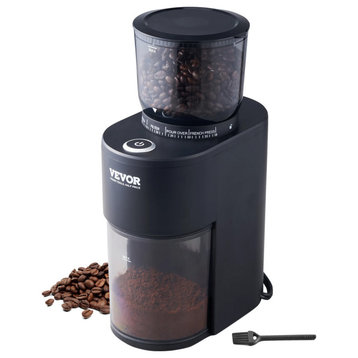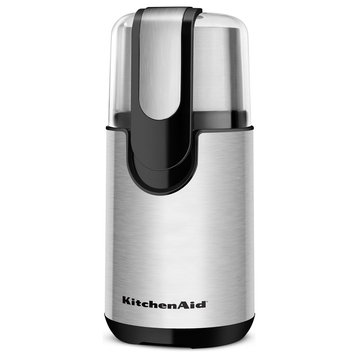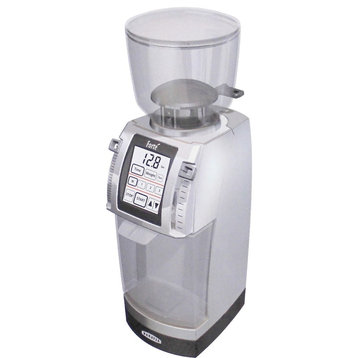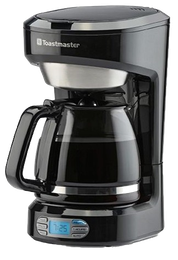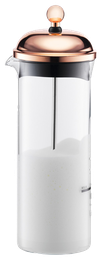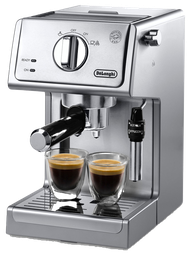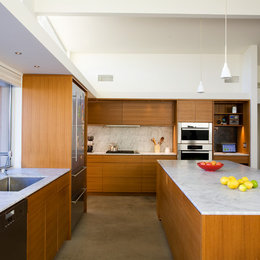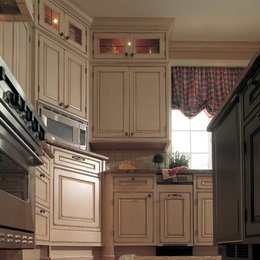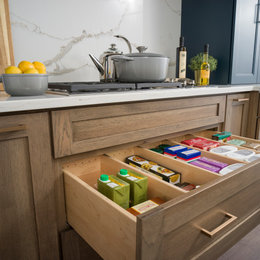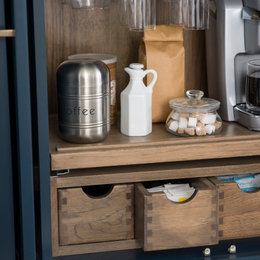FREE shipping on orders over $49!* Details
- All Products
- Kitchen & Dining
- Coffee & Tea
- Coffee & Tea Makers
- Coffee Grinders
Coffee Grinders
15 Results
Sort by:
Price
15 Results
VEVOR Coffee Grinder 14 Cups Electric Burr Mill 40MM Conical Burrs for Espressoby VEVOR
$65
Free Shipping
Electric Burr Coffee Grinder
The burr coffee grinder with high hardness conical burr offers uniform coarseness or fineness at the touch of a button, and it suits for Turkish coffee, uniform and fine powder without flying powder. The large capacity bean hopper allows you to grind coffee for your morning crew.
51 Grind Presets: With 51 grinding levels and customized buttons to precisely adjust the coarseness and fineness of coffee powder to correspond to the different coffee brewing apparatus needs of the whole family. From espresso to turkish coffee, you just only need one machine.
Stainless Steel Conical Burrs: With high hardness conical blades, 1.25g/s fast powder output, and 450RMP low-temperature slow grinding, this coffee grinder ensures that your coffee is ground evenly, allowing you retain the original flavor and rich oil of coffee beans.
14 Cups Capacity: The large bean hopper can hold up to 275g (9.7oz) coffee beans, and grind up to 14 cups at one time. One serving of beans can satisfy multiple people sharing at the same time throughout the day.
Effortless to Clean: This conical burr grinder comes with a cleaning brush, combined with detachable conical burrs, which can quickly and easily sweep away the coffee bean dirts.
The burr coffee grinder with high hardness conical burr offers uniform coarseness or fineness at the touch of a button, and it suits for Turkish coffee, uniform and fine powder without flying powder. The large capacity bean hopper allows you to grind coffee for your morning crew.
Features & Details
Anti-static Device: Built-in negative ion static removal device to avoid coffee powder from clumping and flying around, easily keep your desktop and powderbin neat and tidy, and enjoy a better coffee grinding experience.51 Grind Presets: With 51 grinding levels and customized buttons to precisely adjust the coarseness and fineness of coffee powder to correspond to the different coffee brewing apparatus needs of the whole family. From espresso to turkish coffee, you just only need one machine.
Stainless Steel Conical Burrs: With high hardness conical blades, 1.25g/s fast powder output, and 450RMP low-temperature slow grinding, this coffee grinder ensures that your coffee is ground evenly, allowing you retain the original flavor and rich oil of coffee beans.
14 Cups Capacity: The large bean hopper can hold up to 275g (9.7oz) coffee beans, and grind up to 14 cups at one time. One serving of beans can satisfy multiple people sharing at the same time throughout the day.
Effortless to Clean: This conical burr grinder comes with a cleaning brush, combined with detachable conical burrs, which can quickly and easily sweep away the coffee bean dirts.
Specifications
- Item Model Number: BD-CG001
- Voltage: 120V/60Hz
- Power: 165W
- Body Material: ABS+Hardware Decoration
- Hopper & Powder Bin Material: Food-grade AS
- Bean Hopper Capacity: 275g / 9.7oz
- Powder Bin Capacity: 100g / 3.5oz
- Grind Knife Type: 40mm Stainless Steel Conical Burr
- Powder Coarseness Adjustment: 51 Gear
- Weight: 3.81lb / 1.7kg
- Dimensions: 7.2 x 4.8 x 12.3 inch / 184 x 122 x 313 mm
- Package Content
- 1 x Coffee Grinder
- 1 x Cleaning Brush
- 1 x Instruction Manual
Hamilton Beach 80385 Coffee Grinder, Stainless Steelby Hamilton Beach(171)
$56
Free Shipping
Highlights:Color: Black/SilverMaterial: Stainless SteelCapacity: 14 cupEvenly grinds coffee for excellent extraction & flavor18 grind settings from coarse to fine2-14 cup selector lets you grind the exact amount of coffee you needTop burr removes for easy cleaning; brush includedHands-free grinding with auto shutoffDishwasher safe coffee containers and lidsLarge, removable bean hopper with lidCoffee container with lid for mess-free grindingEasy-clean removable top burr, ground coffee container and bean hopperIncludes cleaning brush
Capresso Metal Infinity Burr Grinder + Coffeeby Capresso
$120
Free Shipping
The Metal version of the Capresso Infinity grinder with brushed chrome finish, adds elegance and weight to this very versatile coffee grinder. With a wide range of settings, the Infinity can grind from Turkish fine to coarse for French Press. Includes a free bag of Capresso Grand Aroma coffee beans.
Founded in 2002 we are a trusted coffee machine supplier that guarantees satisfaction! Welcome to 1st in Coffee, where your total satisfaction is our 1st priority. Through ease of use, outstanding service and advice, a terrific selection and great values, 1st in Coffee will make your shopping experience the best it can be.
Founded in 2002 we are a trusted coffee machine supplier that guarantees satisfaction! Welcome to 1st in Coffee, where your total satisfaction is our 1st priority. Through ease of use, outstanding service and advice, a terrific selection and great values, 1st in Coffee will make your shopping experience the best it can be.
Peugeot Antique Coffee Mill - 21cm/8.25"by Peugeot
$210
Free Shipping
The Peugeot Antique collection coffee mill will bring you the unique pleasures of freshly-ground coffee. This coffee mill is made of hand-aged beechwood. Like Proust's madeleine, the Peugeot Antique coffee mill restores all the charm and aroma of coffee ground at home, the traditional way. With its aged finish, its closed hopper, its grind adjustment wheel under the handle, the Peugeot Antique coffee mill is a genuine allusion to the traditional coffee mills of our grandparents and great-grandparents. Its steel mechanism, with a lifetime guarantee, grinds with precision and astonishing speed, preserving the integrity of the flavour of the coffee beans. A superb beechwood piece, the Peugeot Antique coffee mill is finished with a hand-applied antique patina, highlighting the warm sensuality of the wood. As if memories of the countryside were joining you in your kitchen to produce espresso or French-style coffee with great precision.
Capresso Coffee and Spice Grinder, Black, 160W, 120Vby Capresso(110)
$35
Free Shipping
Highlights:
- Dishwasher Safe: No
- Fast stopping action and a clear see-through lid provide safety
- Suitable for use with coffee beans, herbs and whole spices
- Pulse action lets you control grind output from coarse to fine
- Number in Package: 1 pack
- Packaging type: Boxed
Specifications:
- Wattage: 160 watts
- Voltage: 120 volts
- Hertz: 60Hz
- Color: Black
- Finish: Matte
- Length: 7-1/2"
- Width: 4"
- Material: ABS
- Capacity: 3-1/2 oz.
- Safety approval: ETL Listed
Mr. Coffee IDS77-NP Electric Coffee Grinder, 9 " x 4 " x 4 ", Blackby Sunbeam Products(1128)
$38
Free Shipping
Highlights:
- Black
- Grinds 4 to 12 cups
- Dimensions: 9" x 4" x 4"
- Removable dishwasher safe grinding chamber
- Cord storage
- Chamber maid cleaning system
- Bowl scraper dislodges coffee from grinding area
- 3 grind settings
- Wide upper collar
- Flip top lid for mess free filling and emptying
Wyndham House Stainless Steel Manual Coffee Grinderby Imtinanz, LLC
$37
Free Shipping
Amazing Kitchen accessories,will help you in your kitchen.
Features:
- Adjustable Grind Setting
- Wooden Knob
- Small Drawer to Collect Grinds
- Also Grinds Herbs/Spices
- Measures 4-5/8" x 6-1/4" x 4-5/8
La Pavoni "Zip" Grinder, Blackby la pavoni(12)
$806
Free Shipping
For those who drink it, there's nothing quite like that first cup of morning caffeine. It is one of the most wonderful pleasures in the world - a perfect sup of coffee or espresso. That is why a true coffee aficionado will appreciate this La Pavoni "Zip" Grinder. LA Pavoni "ZIP" Grinder, Black, Commercial coffee grinder, The hopper holds 2. 2 lbs. of beans, on/off function, Built-in tamper 21" tall , Made in Italy. ETL Certified.
Dedica Conical Burr Grinder With 14-Cup Grinding Capabilityby De'Longhi(386)
$230
Free Shipping
The rich fragrance of freshly ground beans holds the promise of an exceptional cup of coffee. De'Longhi's Dedica conical burr grinder has 18 variable grind settings for espresso, drip, pour over and French press coffee so you can customize your grind like a professional. Grind a single espresso directly into the portafilter, or grind up to 14 cups and keep them fresh in the included storage container.
CrushGrind Columbia Coffee Grinder - Blackby CrushGrind(25)
$70
Free Shipping
Our Colombia coffee grinder is a manual, hand-held coffee grinder with patented technology. Colombia can be used at home or on-the-go, it is slim and fits perfectly in a bag. The handle knob can be placed at the top with the handle fixed by a magnet at the side, and it will work as a lid in that position. Form follows function which gives the product its iconic look with the sphere at the top. Design by: Carl and Carl
La Pavoni "Zip" Grinder, Redby la pavoni(7)
$808
Free Shipping
For those who drink it, there's nothing quite like that first cup of morning caffeine. It is one of the most wonderful pleasures in the world - a perfect sup of coffee or espresso. That is why a true coffee aficionado will appreciate this La Pavoni "Zip" Grinder. LA Pavoni "ZIP" Grinder, Red, Commercial coffee grinder, The hopper holds 2. 2 lbs. of beans, on/off function, Built-in tamper 21" tall , Made in Italy. ETL Cetified.
Yescom 1 Pack 22'x23' Rectangle Sun Shade Sail Gray+White Canopy 97% UV Blockby Yescom(40)
SALE
$85$100
Free Shipping
Features:
- Decorative & Effective Shading - 23x22 ft Rectangle Sun Shade Sail, gorgeous color to attract attention, a beautiful decoration for backyard, balcony, terrace, porch, pergola, poolside, deck and so on; Also, a perfect awning sunscreen shade to cool down patio for outdoor party with friends or families
- HDPE Reduces Heat Transfer - Made by 100% brand new 185GSM HDPE material to efficiently reduce the temperature under sail about 50°F (10°C), excellent breathability to allow breeze to pass through, offers a cool and airy shelter on hot days
- 97% UV Block Protection - Effectively blocks 97% of harmful UV ray to protect your delicate skin from blazing sun, creating a comfortable area in summer time
- Easy Assembly & Maintenance - Hanging ropes included for convenient installation by simply connecting stainless steel D-shape rings and the mounting points; Foldable design for space-saving storage, washable sail also for easy cleaning,
- Durable in Use - Triple stitched seam reinforces the edge to prevent fraying and ripping; Curved rectangle shape helps the sail to keep tight; Heavy-duty nylon ropes included; Anti-ager composition added for long time service; 5-year warranty for quality issue
Specification:
- Overall Dimension(LxW): 22ft x 23ft (670.5 x 701 cm)
- D-shape Ring Dimension(LxWxH): 1 7/8" x 1 3/4" x 1/4" (4.8 x 4.5 x 0.6 cm)
- Rope Length: 13 1/12ft (400 cm)
- Fabric Weight: 185 GSM
- Net Weight: 18.7 Lbs (8.5 kg)
Package Content:
- 1x Sun Shade Sail
- 4x Ropes
- 1x Manual
Notice:
- Please allow approx. 6" measuring deviation due to manual measurement and flexibility of fabric. Each side may be 6" longer than the related product size showed on the listing.
- The sail colors represented on the website may differ slightly from the actual product, and different monitors may cause colors to vary slightly. Viewer's discretion is advised.
VEVOR Coffee Grinder 20 Cups Electric Burr Mill 40MM Conical Burrs for Espressoby VEVOR
$46
Free Shipping
Electric Burr Coffee Grinder
The burr coffee grinder with high hardness conical burr offers uniform coarseness or fineness at the touch of a button, and it can meet a variety of brewing appliances' grinding needs. The large capacity bean hopper allows you to grind coffee for your morning crew.
Stainless Steel Conical Burrs: With high hardness conical blades, 1.25g/s fast powder output, and 350RMP low-temperature slow grinding, this coffee grinder ensures that your coffee is ground evenly, allowing you retain the original flavor and rich oil of coffee beans.
20 Cups Capacity: The large bean hopper can hold up to 150g (5.3oz) coffee beans, and grind up to 20 cups at one time. One serving of beans can satisfy multiple people sharing at the same time throughout the day.
Release Your Worry: No need to stand by during the long operation of the machine, this burr mill is equipped with automatic temperature measurement and overheat and power-off protection system to extend the lifespan of the motor and prevent leakage and fire caused by high temperature.
Effortless to Clean: This conical burr grinder comes with a cleaning brush, combined with detachable conical burrs, which can quickly and easily sweep away the coffee bean dirts.
The burr coffee grinder with high hardness conical burr offers uniform coarseness or fineness at the touch of a button, and it can meet a variety of brewing appliances' grinding needs. The large capacity bean hopper allows you to grind coffee for your morning crew.
Features & Details
38 Grind Presets: With 38 grinding selections to precisely adjust the coarseness and fineness of coffee powder to correspond to the different coffee brewing apparatus needs of the whole family. From espresso to hand brewed, you just only need one machine.Stainless Steel Conical Burrs: With high hardness conical blades, 1.25g/s fast powder output, and 350RMP low-temperature slow grinding, this coffee grinder ensures that your coffee is ground evenly, allowing you retain the original flavor and rich oil of coffee beans.
20 Cups Capacity: The large bean hopper can hold up to 150g (5.3oz) coffee beans, and grind up to 20 cups at one time. One serving of beans can satisfy multiple people sharing at the same time throughout the day.
Release Your Worry: No need to stand by during the long operation of the machine, this burr mill is equipped with automatic temperature measurement and overheat and power-off protection system to extend the lifespan of the motor and prevent leakage and fire caused by high temperature.
Effortless to Clean: This conical burr grinder comes with a cleaning brush, combined with detachable conical burrs, which can quickly and easily sweep away the coffee bean dirts.
Specifications
- Item Model Number: BD-CG011A
- Voltage: 120V/60Hz
- Power: 200W
- Material: ABS + Food-grade AS
- Bean Hopper Capacity: 150g / 5.3oz
- Powder Bin Capacity: 150g / 5.3oz
- Grind Knife Type: 40mm Stainless Steel Conical Burr
- Powder Coarseness Adjustment: 38 Gear
- Weight: 3.3lb / 1.5kg
- Dimensions: 7.1 x 4.1 x 11.3 inch / 180 x 105 x 288 mm
- Package Content
- 1 x Coffee Grinder
- 1 x Cleaning Brush
- 1 x Instruction Manual
Blade Coffee Grinder, Onyx Blackby KitchenAid(2490)
$54
Free Shipping
KitchenAid's BCG111OB Blade Coffee Grinder, in onyx black, features a powerful blade grinding mechanism that consists of a stainless steel blade driven by a powerful 160-watt motor to grind coffee rapidly with minimum noise. The 4 oz. brushed stainless steel grinding bowl easily holds enough beans to brew up to 12 cups of coffee. The bowl has internal etched measurement markings that display the recommended brew (4, 8, 10 and 12 cups). The clear, top cover gives you one-touch control. Simply push down on the cover to begin grinding and release to stop. The clear cover also allows you to easily see the consistency of grinds. The heavy-duty motor housing helps keep the grinder stable during operation. Plus, the bowl lifts out, making it easy to transfer grinds to the coffee maker.
Baratza Forteby Baratza
$899
Free Shipping
The Baratza Forte; is a commercial grade, dual-function grinder, capable of grinding by weight or time. It features a new hopper the can be removed with the beans in it. This all purpose ceramic burr grinder is great for all types of coffee preparation from espresso to French press.
Founded in 2002 we are a trusted coffee machine supplier that guarantees satisfaction! Welcome to 1st in Coffee, where your total satisfaction is our 1st priority. Through ease of use, outstanding service and advice, a terrific selection and great values, 1st in Coffee will make your shopping experience the best it can be.
Founded in 2002 we are a trusted coffee machine supplier that guarantees satisfaction! Welcome to 1st in Coffee, where your total satisfaction is our 1st priority. Through ease of use, outstanding service and advice, a terrific selection and great values, 1st in Coffee will make your shopping experience the best it can be.
Build a home that reflects the best version of you
Free Shipping
Get free delivery on orders $49+ and stress-free refunds.
Curated Marketplace
Shop thousands of hand-picked pieces in a variety of styles.
Top Customer Service
Expert help is our number one priority (and we’re #1* at giving it).
Beyond Products
Find Inspiration and professionals to achieve your dream home.
*Per Newsweek’s list of “America’s Best Customer Service 2023” in the category of “Online Retailers: Home Goods for Online Home Stores”
A quality coffee grinder is often what makes or breaks a delicious pot of coffee. If you’re preparing a cup of Joe at home, you may be tempted to simply purchase pre-ground coffee from the grocery store. Don’t do it! Not only will your decoction not taste as good as one prepared by a professional barista, the pre-packaged grounds could clog your machine, among other problems. So how do you choose a quality coffee bean grinder? Here are a few tips to guide you as you shop.
Most professionals don’t recommend a manual coffee grinder. They’re unable to grind the beans at a consistent rate, resulting in varying degrees of coarse or fine grounds. They’re also slow, requiring about 2 to 3 minutes to grind enough espresso for a double shot. Of course, there are exceptions to this, and if you just have to have those freshly ground beans while on a trip, a manual grinder can do the trick.
Coffee grinders can come with dozens of features, so it can be confusing to try and pick one out that will cover all of your needs. Here’s a quick rundown of the more common features and terms you should be on the lookout for.
• Timer: A timer allows coffee grinders to reduce the amount of waste by telling them the exact amount to grind based on your input. Therefore, it can be worthwhile to spend more on a model that features a high-end digital timer.
• Burr shape: Your grinder should feature either conical or flat burrs, which grind your beans into coarse or fine grounds. It’s not yet been determined which style brews up the best cup. Whatever the case, make sure your coffee bean grinder features burrs and not blades, which won’t produce a consistent level of grind and often result in chunky, raggedly sliced beans.
• Stepped or stepless: A stepped grinder will allow you to change the coarseness or fineness of the grind by moving a lever or knob. They’ll feature only a certain number of “steps,” or grind sizes, which won’t matter as much for French press, pour over or drip beverages. If espresso is your drink of choice, however, you’ll want to search for a stepless model, which features an infinite number of adjustments. They’ll allow you to punch in a specific level of grind, which can have a huge impact on the final taste of your shot.
• Doserless or doser: These are two different ways for the grinder to collect the grounds. Doserless styles allow you to grind your beans directly into the portafilter basket or into a bag. They’re adept at reducing the amount of grounds wasted, and can be well worth the extra cost. They are, however, prone to clumping and are known to spray grounds onto your counter. The doser style has been around since the 1930s, and features a collection bin that holds the ground beans until you tilt a lever to release them. They reduce the chance of clumping and spilling, but it may be difficult to dispense the right amount of grounds, resulting in wasted beans.
Should I buy an electric or manual coffee grinder?
Most professionals don’t recommend a manual coffee grinder. They’re unable to grind the beans at a consistent rate, resulting in varying degrees of coarse or fine grounds. They’re also slow, requiring about 2 to 3 minutes to grind enough espresso for a double shot. Of course, there are exceptions to this, and if you just have to have those freshly ground beans while on a trip, a manual grinder can do the trick.
What kinds of features should my coffee bean grinder have?
Coffee grinders can come with dozens of features, so it can be confusing to try and pick one out that will cover all of your needs. Here’s a quick rundown of the more common features and terms you should be on the lookout for.
• Timer: A timer allows coffee grinders to reduce the amount of waste by telling them the exact amount to grind based on your input. Therefore, it can be worthwhile to spend more on a model that features a high-end digital timer.
• Burr shape: Your grinder should feature either conical or flat burrs, which grind your beans into coarse or fine grounds. It’s not yet been determined which style brews up the best cup. Whatever the case, make sure your coffee bean grinder features burrs and not blades, which won’t produce a consistent level of grind and often result in chunky, raggedly sliced beans.
• Stepped or stepless: A stepped grinder will allow you to change the coarseness or fineness of the grind by moving a lever or knob. They’ll feature only a certain number of “steps,” or grind sizes, which won’t matter as much for French press, pour over or drip beverages. If espresso is your drink of choice, however, you’ll want to search for a stepless model, which features an infinite number of adjustments. They’ll allow you to punch in a specific level of grind, which can have a huge impact on the final taste of your shot.
• Doserless or doser: These are two different ways for the grinder to collect the grounds. Doserless styles allow you to grind your beans directly into the portafilter basket or into a bag. They’re adept at reducing the amount of grounds wasted, and can be well worth the extra cost. They are, however, prone to clumping and are known to spray grounds onto your counter. The doser style has been around since the 1930s, and features a collection bin that holds the ground beans until you tilt a lever to release them. They reduce the chance of clumping and spilling, but it may be difficult to dispense the right amount of grounds, resulting in wasted beans.
Item 1 of 3
Join the discussion about “Coffee Grinders”
Get advice from our community of pros & homeowners
Best-looking countertop coffee grinder
by mcarroll16
Home DecoratingDesign DilemmaKitchens
7
 +5
+5
Coffee grinders - which one is the best?
by Stephan Braun
Appliances
34
 +32
+32
Got a rustic coffee grinder... how do I showcase it?
by Six Silver
Design Dilemma
16
 +14
+14
OT - What's Your Favorite Burr Coffee Grinder?
by AnnaA
Kitchens
32
 +30
+30
Of knives and coffee grinders
by writersblock (9b/10a)
Kitchens
29
 +27
+27
Item 1 of 5
Related Photo Ideas
Find inspiration from beautiful photos
Frequently Asked Questions
Do you offer free shipping on Coffee Grinders?
If a product is marked with a “Free Shipping” badge, or if the total cost of the products in your order is more than $49, your order will ship for free in most cases! For exclusions, please review our Shipping Policy.What is the return policy for Coffee Grinders?
We accept returns for most items within 30 days of delivery! See more information and exceptions in our Return Policy.What are the accepted payment methods for Coffee Grinders?
You can pay for your Coffee Grinders using a credit card (Visa, MasterCard, Discover, American Express, or Houzz Credit Card) as well as through PayPal. Some orders are also eligible to be paid for using Afterpay or Apple Pay.
